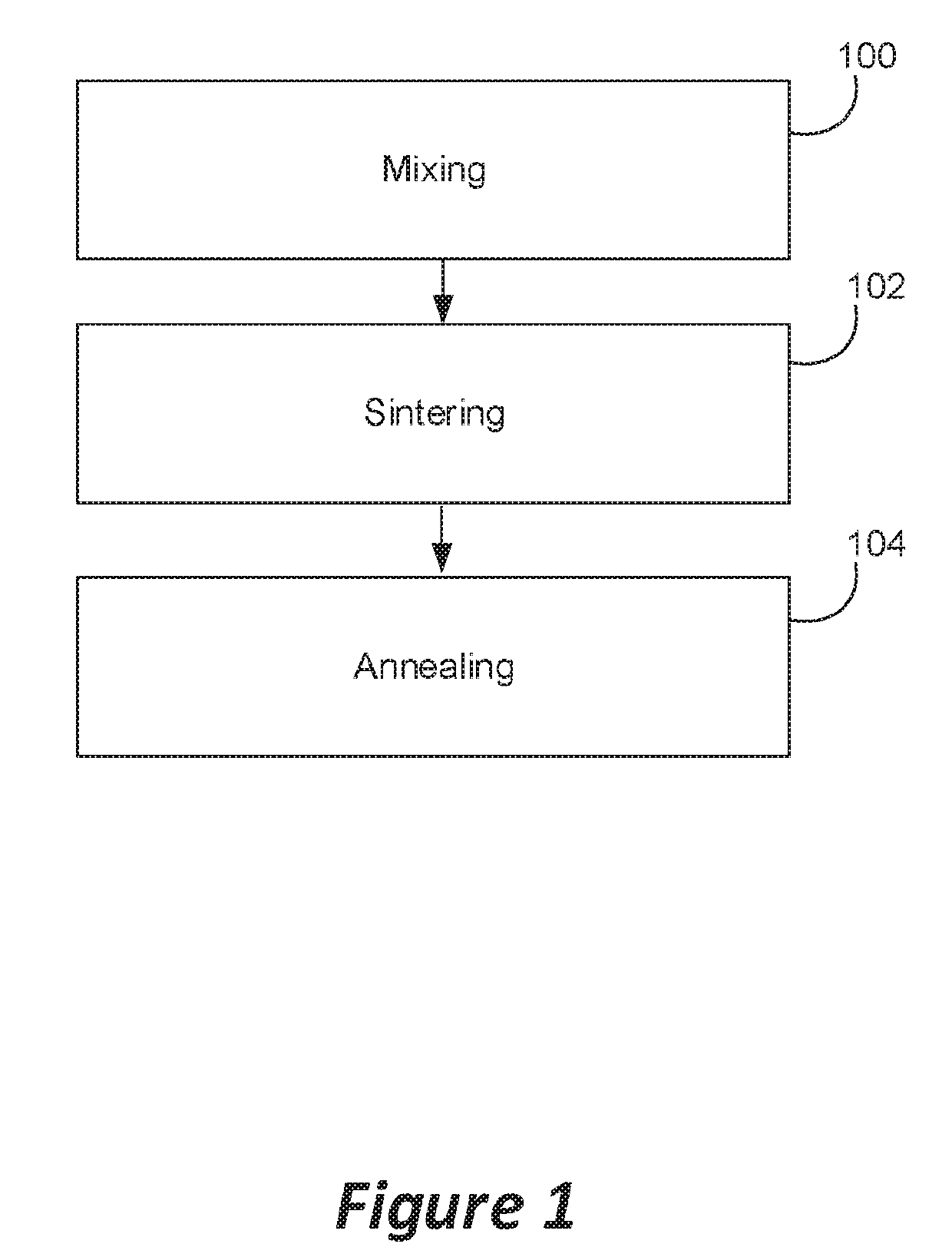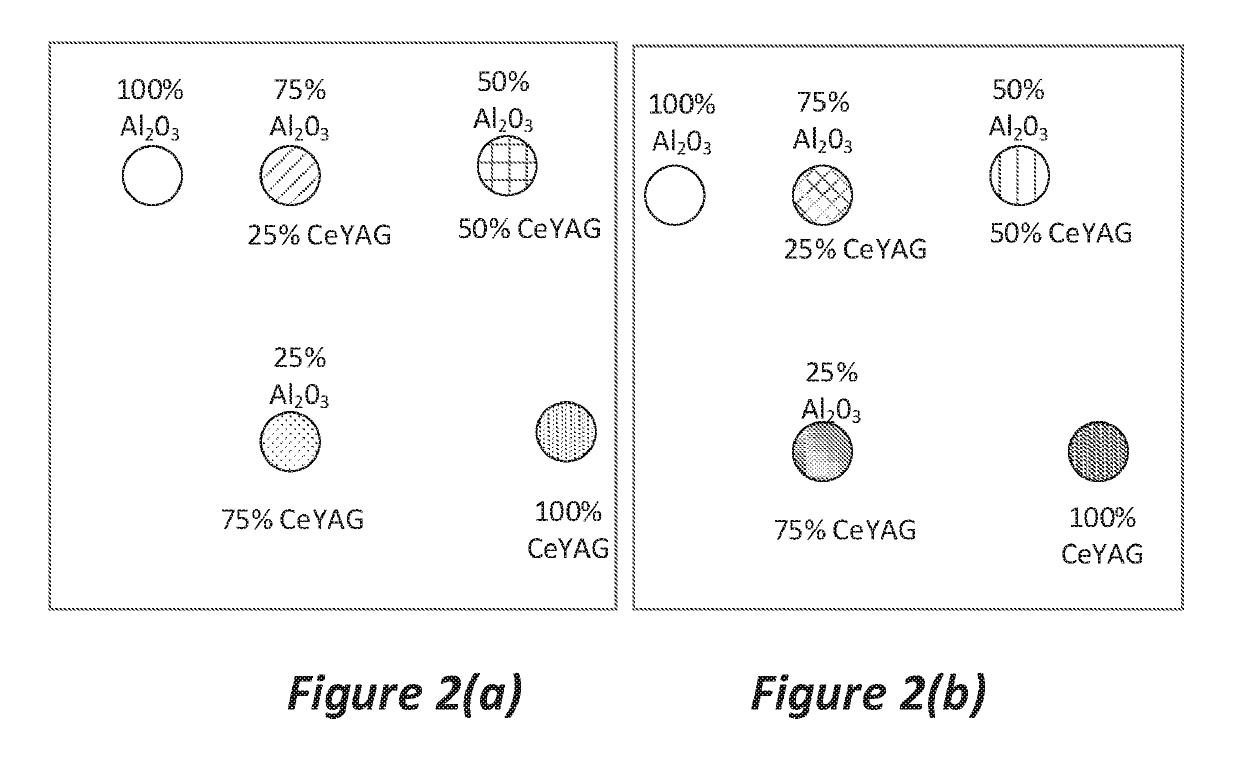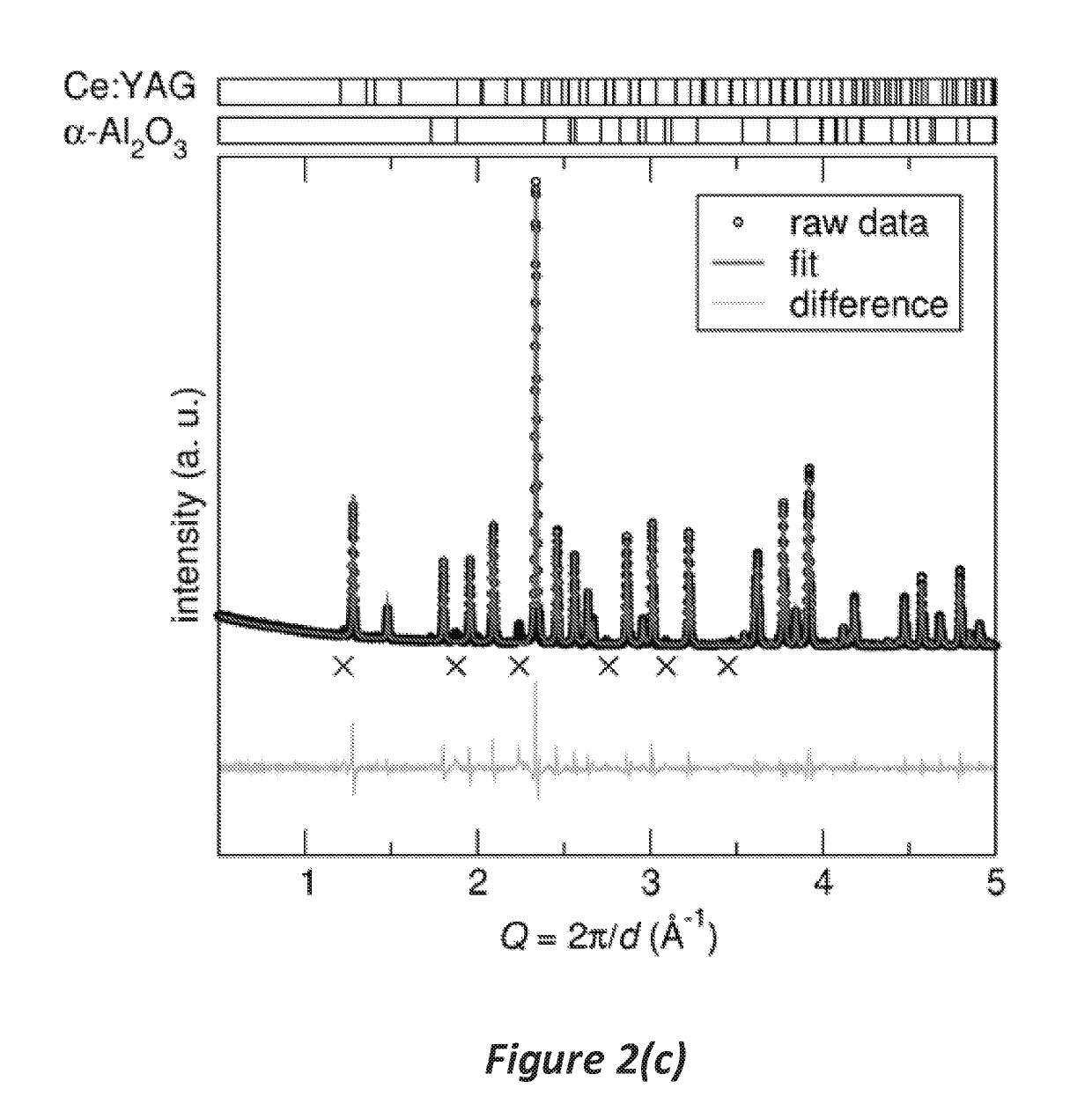Ce:YAG/Al2O3 COMPOSITES FOR LASER-EXCITED SOLID-STATE WHITE LIGHTING
a technology of laser-excited solid-state lighting and composites, which is applied in the direction of sustainable buildings, semiconductor devices for light sources, lighting and heating apparatus, etc., can solve the problems of degrading the performance of phosphor, energy loss during conversion, and inability to meet the higher flux, so as to reduce the operating temperature of phosphor materials, reduce materials cost, and increase lumen output
- Summary
- Abstract
- Description
- Claims
- Application Information
AI Technical Summary
Benefits of technology
Problems solved by technology
Method used
Image
Examples
example fabrication
[0055
[0056]FIG. 1 is a flowchart illustrating a method of fabricating a composite according to one or more embodiments of the invention.
[0057]Block 100 represents preparing a mixture (mixing a phosphor and a filler to form the mixture). For the data presented herein, mixtures of commercially available Ce-doped yttrium aluminum garnet (Y3Al5O12:Ce3+, or Ce:YAG) and alpha phase alumina (α-Al2O3, Sigma Aldrich, 99.99%) were used as examples and the following mixtures of the Al2O3 (as a filler) and the Ce:YAG by weight were prepared and measured: samples of 0% Ce:YAG / 100% Al2O3, 25% Ce:YAG / 75% Al2O3, 50% Ce:YAG / 50% Al2O3, 75% Ce:YAG / 25% Al2O3, and 100% Ce:YAG / 0% Al2O3. The starting oxides (Al2O3, 99.99%) and Ce-YAG were weighed out and mixed with an alumina mortar and pestle with care taken to just mix the samples (i.e., care was taken to not grind the samples). 0.75 grams (g) of each mixture was weighed out and placed into the SPS die set with 10 mm diameter cavity with 1 mm thick grap...
PUM
| Property | Measurement | Unit |
|---|---|---|
| time | aaaaa | aaaaa |
| angle | aaaaa | aaaaa |
| external quantum efficiency | aaaaa | aaaaa |
Abstract
Description
Claims
Application Information
 Login to View More
Login to View More - R&D
- Intellectual Property
- Life Sciences
- Materials
- Tech Scout
- Unparalleled Data Quality
- Higher Quality Content
- 60% Fewer Hallucinations
Browse by: Latest US Patents, China's latest patents, Technical Efficacy Thesaurus, Application Domain, Technology Topic, Popular Technical Reports.
© 2025 PatSnap. All rights reserved.Legal|Privacy policy|Modern Slavery Act Transparency Statement|Sitemap|About US| Contact US: help@patsnap.com



